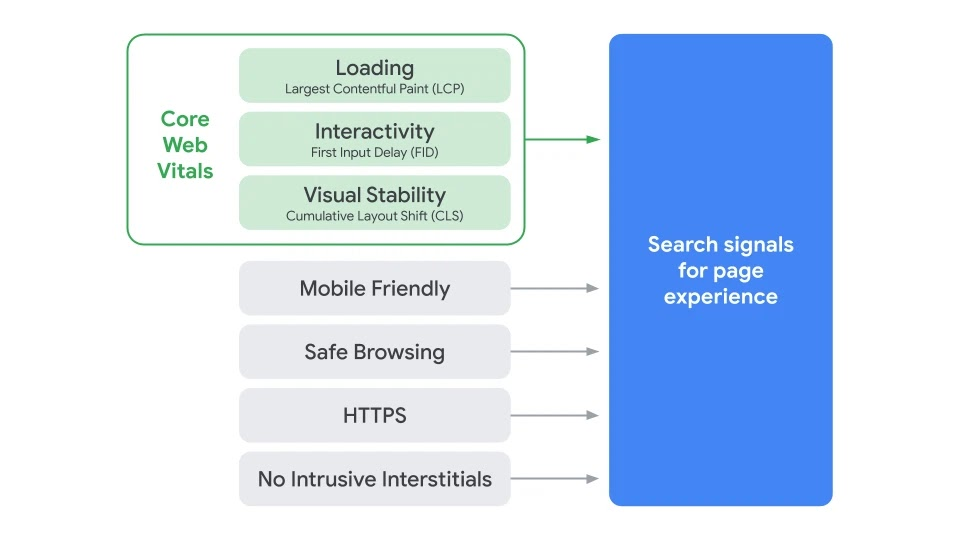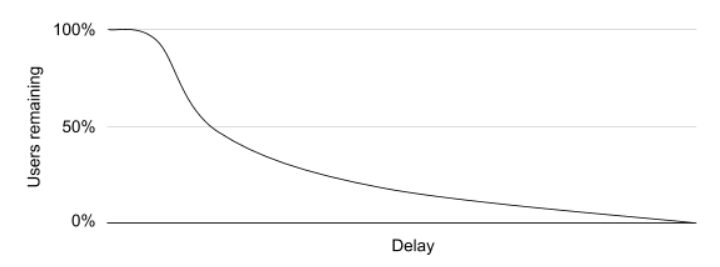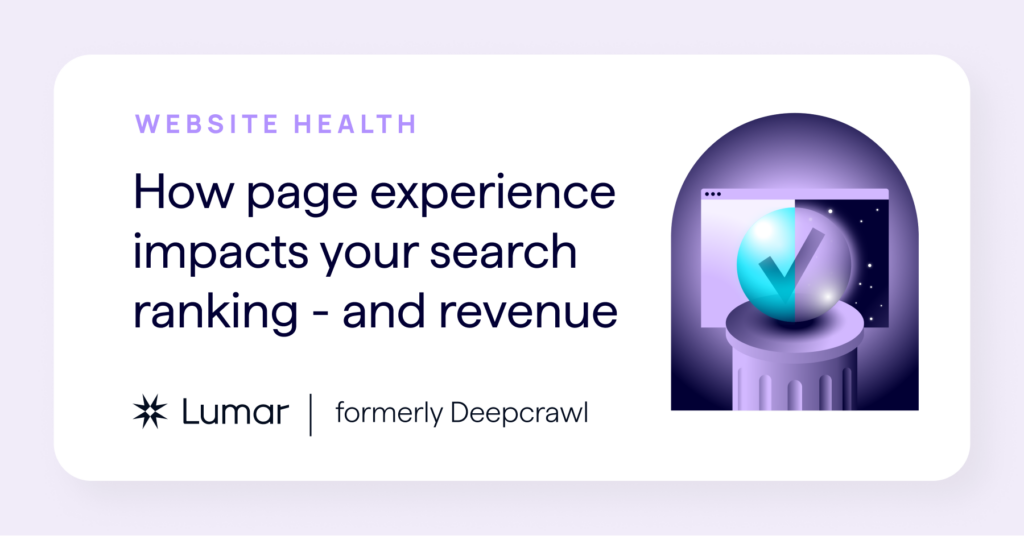Here at Lumar (formerly Deepcrawl), we’ve been banging the drum about how user experience is crucial for search visibility and organic marketing for years – but as we move into 2022, we believe UX is more important than ever.
While a user’s experience on any given page plays a large role in their overall satisfaction (or frustration) and their likelihood to return to your website in the future, page experience is also a significant ranking factor for search engines, particularly since Google introduced its Core Web Vitals last year. It makes sense that, in an effort to direct users to the most useful piece of content for a given keyphrase, search engines would want to favor a destination that is user-friendly. After all, why point users to a website where they are going to get frustrated by poor UX and click away immediately? Why show them a site that loads so slowly they will get bored waiting and end up distracted by another open tab?
When it comes to Google, page experience is of course not the only factor the algorithm is looking for when it is ranking pages in the SERPs, but it’s a critical piece of the pie. And with the introduction of Core Web Vitals and improvements in SEO tools to help track these metrics, SEOs and digital marketers are in a better position than ever to capitalize on user experience upgrades that will have the greatest impact on both search rankings and revenue-driving conversions.

This post is part of Lumar’s series on Website Health. In this series, we are diving deep into each of the 7 categories of the SEO Funnel to help digital marketing teams learn more about the many elements of search engine optimization that contribute to a high-performing, healthy website.
Introduction: What are Google’s Core Web Vitals (CWVs) and how do they impact search results?
Together, the CWVs incorporate three major signals that influence how Google understands the quality of your website’s user experience.

(Image: Google Search Central)
We summarized the Core Web Vitals in our write-up of Jamie Indigo’s “Deepcrawl Live” presentation on the subject, but to recap:
- Loading: This CWV refers to how long it takes for the webpage to provide the content the user is there for. It is measured by Largest Contentful Paint (LCP); the time it takes for the page’s largest image or text block to become visible within the viewport.
- Interactivity: Measures page responsiveness when the user interacts with it, i.e. clicks a button. Measured by First Input Delay (FID), the time it takes for the browser to begin processing event handlers in response to the interaction.
- Visual Stability: Does the page shift after a click? Measured by Cumulative Layout Shift (CLS), a calculation based on the number of frames in which elements visually move and the total distance in pixels they moved.
To learn more about Core Web Vitals, check out the CWV section of our SEO Office Hours Library, or download our free eBook on the subject, The Complete Guide to Core Web Vitals.
How to address UX issues in your SEO strategy
SEO and UX are no longer siloed efforts within an organization—these teams must work together to achieve the best results. Luckily, there are many great tools available to help UX and SEO teams collaborate on identifying and improving page experience issues.
Using Google’s Chrome UX Report, the updated Search Console, or third-party tools (such as our own technical SEO platform), SEOs, UX designers, and digital marketers can dig down into more granular details to see how their websites are performing across these user experience signals like the Core Web Vitals. Marketers and SEOs no longer have to use long-winded methods of deduction – such as spikes in bounce rates or drops in ranking – and then work backward to know a UX tweak has had an adverse effect on our organic search goals. With more robust SEO analytics tools than ever available in 2022, we should aim to be on the front foot when it comes to addressing UX issues for SEO.
But in making improvements to page experience, SEOs cannot work in isolation. To truly make this a priority in your organization, it’s important for teams across the business to understand the importance of UX—and the impact page experience can have on organic traffic, conversions, and revenue.
Page experience as a revenue driver
So how does your website’s user experience influence the wider business? Improving your page experience can do more than just boost your website’s visibility in the SERPs. Better UX can also have a positive impact on conversion rates, brand reputation, and, ultimately, can contribute to more revenue being generated from online channels.
While improving UX can help give you a boost in the search engine rankings (particularly now, with Google’s Core Web Vitals firmly in place) and drive more organic traffic to your site, it is also vitally important to more than just gaining positions in the search results. After all, more traffic does not automatically mean more conversions. It’s helpful to take a more holistic view of UX and appreciate its potential to do more than simply bolster your SEO efforts.
We also need to consider user attentiveness when they arrive to your website. Users who are not having a good experience – and are thus clicking away or abandoning pages completely – are less likely to spend time on your site, less likely to see your full product or service offering, and less likely to convert into customers. And it is only getting harder to keep users engaged, as Indigo highlights in their CWV webinar:
“You have 8 seconds of your user’s attention on a screen. We don’t spend very long, especially on a mobile device, waiting for our questions to be answered.”
Google has published its own research on how improving page experience via the CWVs can make a massive difference in keeping users on-site, stating over at the Chromium blog that: “When a site meets the [CWV] thresholds, users are 24% less likely to abandon page loads.”
This is especially significant for eCommerce websites, where the need for customers to complete their task – i.e. make a purchase – is crucial for the business’s revenue.
There are benefits to having a high-quality user experience beyond simply improving your page ranking and driving organic search traffic. User experience ties into your overall customer experience (CX) efforts—because most consumers engage with brands online, their experience on your website can make up a large part of their overall CX journey. On the Chromium blog, they report that delays in page loading decreased satisfaction and users’ intention to return: “On unfamiliar sites, 2 seconds of delay was enough to cause most of the drop – familiar sites bottomed out after longer delays. On unfamiliar sites, task performance also suffered, with most of the drop observed with delays of up to 4 seconds.”

(Graph source: Chromium )
If you want to see returns on your customer acquisition costs (CAC), you don’t want to lose potential customers due to page load delays and other usability issues that reduce their likelihood of returning to your site.
Summary & key takeaways
- Page experience has never been more important for page ranking and search visibility, but with the arrival of Core Web Vitals SEOs have never had it better in terms of knowing exactly which UX metrics Google’s algorithm considers when determining page rank in the SERPs.
- Digital marketers and SEOs are used to dealing with all manner of website analytics and it is fairly easy, with the right tools, to incorporate CWV metrics like Largest Contentful Paint, First Input Delay and Cumulative Layout Shift into our overall view of website health and performance.
- SEO and UX teams—as well as marketing and C-suite leaders—need to have a strong understanding of how their work influences each team’s goals, as well as larger business objectives. Having strong cross-functional partnerships and processes in place between UX designers, dev teams, SEOs, and marketing leaders will help ensure that your page experience efforts are getting the attention they deserve.
- UX can a have far-reaching impact, beyond just influencing page ranks in the SERPs – good page experiences can influence conversion rates, sales, revenue, and ROI. For some companies, there may well be a broader cultural shift that needs to happen to ensure that UX is a priority and understood as part of larger CX and organic marketing goals. In making that business-wide shift, SEOs and digital marketers have a vital role to play.
Want to learn more about the various elements that impact your website’s overall health and performance in the search results? Check out the rest of Lumar’s Website Health series.



